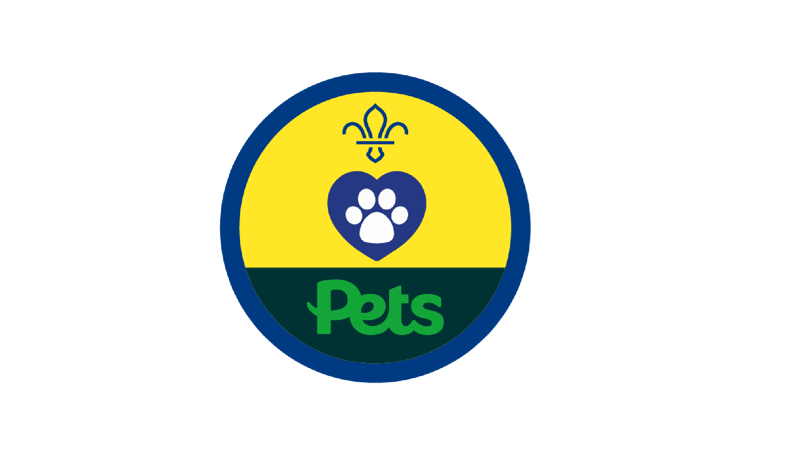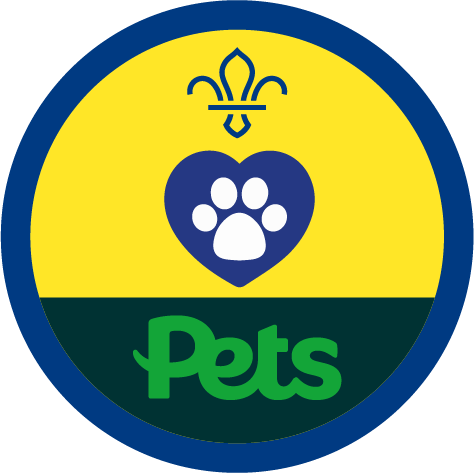
Animal friends
You’ll need
Before you begin
- Consider inviting parents and carers who own a pet to help with this activity.
Talk about what animals need
- People who own pets should get into groups with anyone who has the same pet as them. For example, all of the dog owners should be in one group, all of the cat owners in another group, and so on. If anyone has more than one pet, they can choose which group they join.
- Anyone who doesn’t have a pet can choose whether they want to join a group of pet owners, or start their own group of wild animal friends.
- Each group should talk about what their animal needs. What does it eat and drink? Where does it live, and how much space does it need? How does it exercise and where does it sleep?
- Each group should make a poster about their animal and its needs.
Share the posters
- The groups should take it in turns to share their poster with everyone else. When it’s their turn, they should explain one or two things their pets need.
- Anyone else who has something to add should put their hands up, and the person leading the activity should help everyone share what they know.
Prepare to care
- The person leading the activity should explain that anyone who wants to earn their Animal Friend Activity Badge needs to look after an animal for four weeks.
- Make sure everyone knows that they don’t need to have their own pet. They should use the 'Options if you don’t have a pet' below to explain what else people could do.
- Everyone should get into small groups, and think about what they may like to do to earn their badge.
- Gather everyone back together, and ask some people what they think they may do and who they’ll need to ask for help.
- Give everyone a letter to take home, so parents and carers understand what people need to do, and what their options are.
Follow up
A few weeks after everyone started caring for an animal, it’s time to catch up.
- Everyone should get into small groups. They should talk in their groups about whether they’ve been looking after an animal, and how it’s been going.
- Ask people what they’ve learned and remind everyone that it’s not too late if anyone would like to look after an animal but hasn’t started yet.
To earn your Beavers Animal Friend Activity Badge, you need to:
- Learn how to care for an animal. Find out what the animal needs. Learn about its food, habitat, space, exercise and sleeping area.
- Help to take care of that animal for four weeks.
- Keep a note of how you have looked after the animal for four weeks. You can draw, take photographs or write short sentences.
- Tell others in your Colony or Lodge about the animal.
We know that not everyone has a pet, so we’ve made sure there are plenty of other options. Whatever you choose to do, don’t forget to learn what it needs, keep a note of how you look after it, and tell your friends all about the experience.
Care for a family, friend, or neighbour’s pet:
You could offer to help care for a pet that belongs to someone else. You could help with feeding time, exercise, play, or cleaning them out - try to have a go at as many different things as you can. If you’re going to visit the pet, you should always take a parent or carer with you (but don’t forget that you need to help take care of the animal, not them!). Maybe someone else’s pet could even come and stay for you for a while - even if it isn’t the whole four weeks.
Care for a visiting pet:
Your Beaver leader may ask a parent, carer, or Beaver volunteer to bring in their pet so everyone can get to know it and help look after it. They may even arrange for more than one pet to visit, and you may be able to plan what you’ll do together based on what the pet likes and doesn’t like. Your Beaver leader will let everyone (and their parents and carers) know if they’re planning to arrange for any animals to visit.
Care for a school pet:
If you’re lucky enough to have a pet (or something even more exciting such as a farm animal) at school, you could help take care of them there. Sometimes, school pets need to be taken home at weekends or during school holidays, so if it’s OK with everyone at home you could volunteer to do that, too - but don’t forget to make sure you have everything you need. Either way, you could help with things such as feeding, cleaning it out, and exercise. Maybe you could offer an extra helping hand during your break or lunchtimes.
Care for a wild animal:
There are also plenty of wild animals that would love your help. You could take care of wild birds, for example. They’d love you to put some bird food out (perhaps you could make a bird table or use a bird feeder). Food (and things like a birdbath) will encourage them to visit, and then you can watch - just make sure you don’t disturb them.
If you have outdoor space like a garden, you could build a frog home or bug hotel out of natural materials like sticks and stones (lots of animals love decaying leaves and rotting logs). You could also leave food out for a hedgehog. If you visit a natural area, an adult should always come with you.
Reflection
This activity helped remind people to value the outdoors. Did you think about any wildlife that lives outside? How can we care for them? What about people who have pets - are there things they can to do help make sure their pet doesn’t hurt wildlife or damage the outdoors?
This activity also gave you the chance to develop skills. What sort of skills do you need to have to look after a pet? You definitely need to be responsible. Think of your dream pet - what would it eat, what would it need? Maybe you could mime taking care of it, and see if anyone can guess what it is. Do you understand how much care a pet needs (even small ones like goldfish)? Do you think you’re ready to help care for an animal?
Safety
All activities must be safely managed. You must complete a thorough risk assessment and take appropriate steps to reduce risk. Use the safety checklist to help you plan and risk assess your activity. Always get approval for the activity, and have suitable supervision and an InTouch process.
- Animals and insects
Be aware of the risks before interacting with animals. Be aware of anyone with allergies, and make alternative arrangements for them.
- Groups don’t have to make posters. They could just chat, or they could even use a tablet or computer.
- A parent or carer could bring in a pet to introduce to the whole group, who could take it in turns to pet it, feed it, or play with it. Check for any allergies and make sure everyone washes their hands afterwards.
- There are lots of reasons people may not have a pet - they may not be allowed one where they live, may not able to afford them, or someone at home may be allergic. Make it clear that you don’t need your own pet, and remember that it could be a sensitive topic for some people.
- The people leading the activity could help with writing or drawing.
All Scout activities should be inclusive and accessible.
You could vote on a type of wildlife to take care of together.
